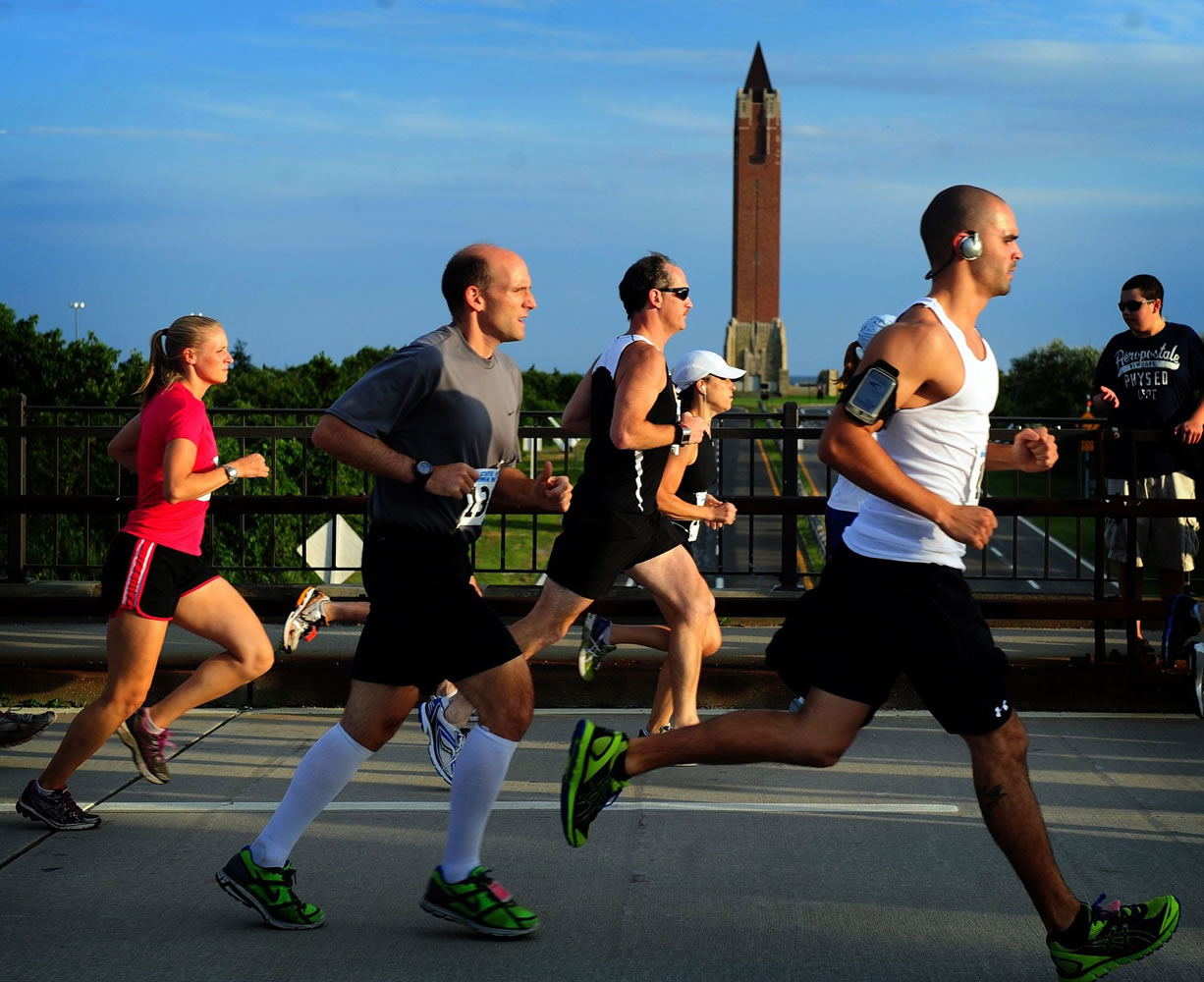While the summer months tend to breed an eagerness to exercise outdoors, people should also be aware of the potential for a heat-related emergency.
Even though our bodies contain a natural cooling mechanism — perspiration — it can still overheat and lead to heat stroke, a potentially deadly condition.
Heatstroke, the point when organs begin to fail and shut down, is normally the final act within the sequence of heat-related illnesses, such as heat rash, heat cramps and heat exhaustion, said Robert Bristol, assistant athletic trainer at St. Joseph’s College in Patchogue, N.Y.
“It is important to recognize these signs when they appear and immediately stop activity,” he said.
Bristol said a person suffering from a heat-related illness should immediately be moved to a cooler area, hydrated and subjected to “active cooling” with cold-water immersion, ice packs or cold towels.
“This active cooling will reverse the negative effects on your internal organs, cardiovascular and neurological systems,” he said.
There are several ways a summer exerciser can help prevent heat-related ailments, such as avoiding strenuous outdoor exercise during the hottest times of the day — 11 a.m. to 4 p.m. — wearing loose and light-colored clothing, applying sunscreen with a minimum SPF of 15 and drinking at least two to four glasses of water per hour during extreme heat, according to the New York State Department of Health.
http://www.columbian.com/admin/news/story/241152/#
Thirst can be a sign of dehydration, so don’t wait until you’re thirsty to drink. A great gauge for measuring your hydration level is by noting your urine color — generally, the lighter the urine, the better hydrated you are. But keep in mind, supplemental vitamins may alter the color.
“We lose water quickly during the summer,” said biochemist and certified nutritionist Dr. Yu-Shiaw Chen, of Long Island Nutrition. “It is important to replenish your water and fluid intake as you go through your hot days. (When) you’re dehydrated, you also lose water soluble vitamins and minerals, so replenish them while you can.”
The state department of health offers the following tips to help identify heat illnesses:
• Heat rash: Skin irritation that looks like a red cluster of pimples or small blisters. Keep the affected area dry, and have the person use talcum powder to increase comfort.
• Heat cramps: Loss of water and salt from sweating causes cramping. Signals are abdominal and leg muscle pain. Relief can be found by applying firm pressure on cramping muscles or gentle massages.
• Heat exhaustion: Heat exhaustion most often occurs when people exercise too heavily in warm, humid places where body fluids are lost. Signals include cool, moist, pale or flushed skin; heavy sweating; headache; nausea or vomiting; dizziness and exhaustion.
• Heatstroke: Heatstroke can be life threatening. Body temperature can rise and cause brain damage; death may result if the individual is not cooled quickly. Signals include hot, red and dry skin; changes in consciousness; rapid, weak pulse and shallow breathing.



